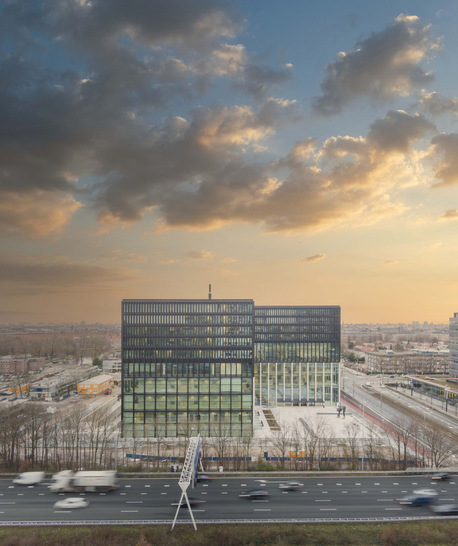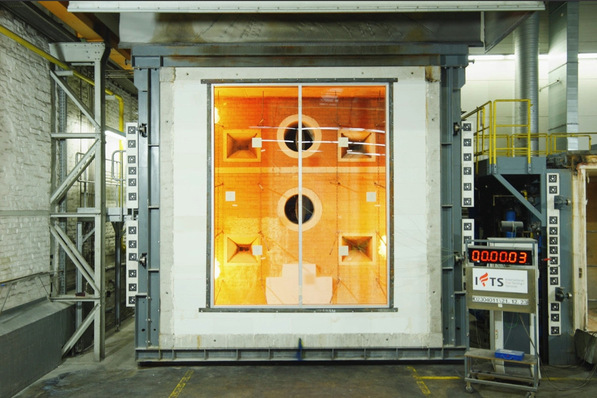With fifty different courtrooms, over one thousand employees, including two hundred judges, and 140,000 cases per year, the Amsterdam court is by far the largest of the eleven courts in the Netherlands. The new court building is the expression of a functional and at the same time comfort-oriented architecture.
An important role is played by glass, which is used as fire protection and high-security glazing in a variety of different structures. The new fire protection and high-security glass in the new Amsterdam courtroom comes from Vetrotech Saint-Gobain Benelux.
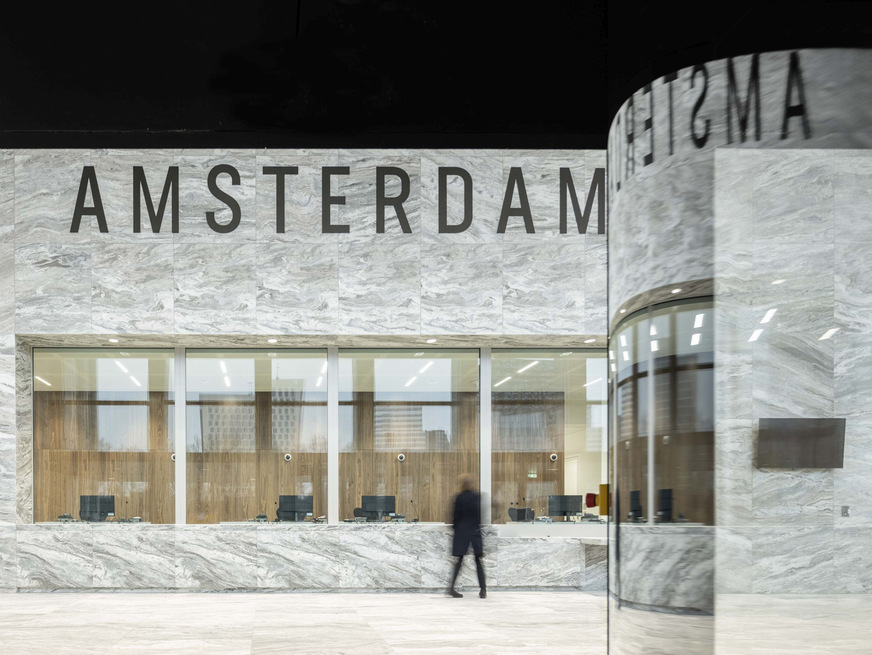
Fernando Guerra FG+SG
What glass was used?
A special feature in the new court building is the special combinations of fire protection and high security glazing for which Vetrotech Saint-Gobain Benelux carried out development tests on a project basis.
This means that existing fire tests were not used, but new compositions of glass, formats and facades were tested specifically for this project.
See also: Contraflam fire protection glass for the Humboldt Forum Berlin
The solutions developed and tested especially for the courthouse and the close cooperation with the architects and the system partners ensured the successful implementation of the project.
In this project, combinations of fire protection, attack resistance, break-through resistance, sound insulation and bullet resistance were used. Around 400 m2 of Contraflam and Contraflam Lite fire-resistant glass in various combinations and classifications EW30, EW60, EI30 and EI 60 were used. In addition, more than 200 m2 of Contraflam Lite EW60 and almost 90 m2 of Vetrogard Bullet were used.
The glass is used in the passageways, but also, with a marble print, in a number of fixed facades. Because these structures had not been tested in the specific steel profiles, Vetrotech Saint-Gobain set up its own test cycle. The results point beyond this project; they have led to new insights into non-standard glass products that combine multiple functions.
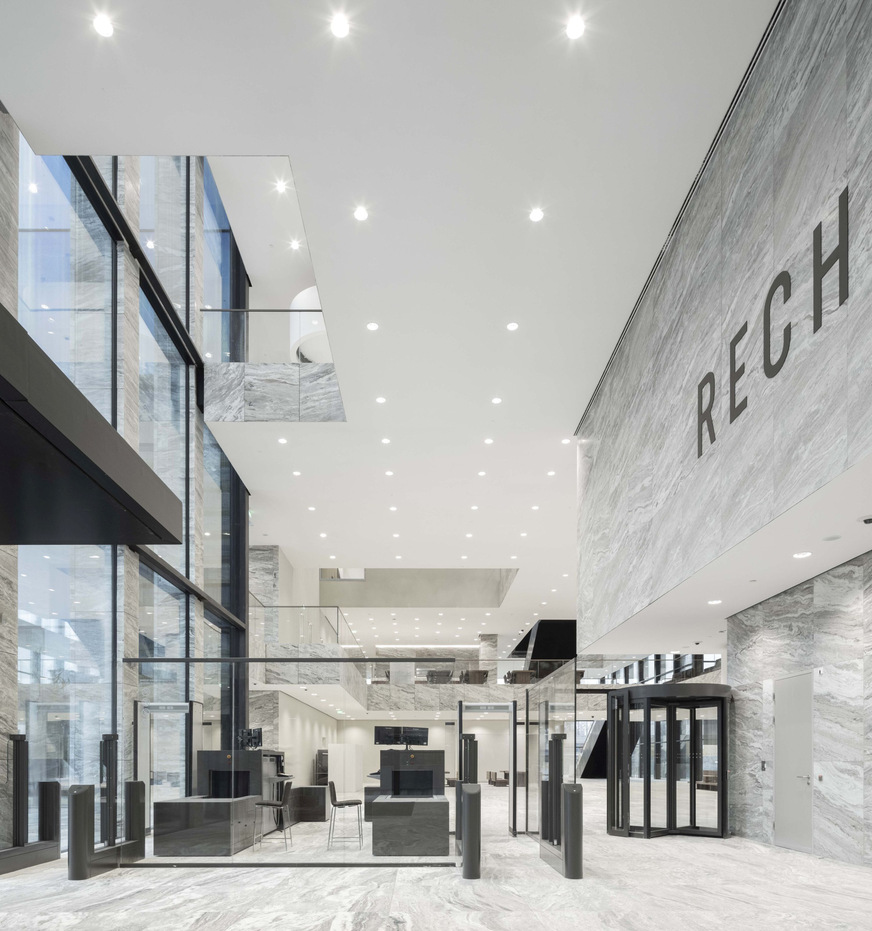
Fernando Guerra FG+SG
From complexity to simplicity
A particular challenge was to combine the different requirements of glass and profiles. Vetrotech Saint-Gobain and Agentor therefore jointly developed solutions that were tested by a recognised body or proven by a fire test.
For example, the requirements for burglary protection were achieved with a combination of fire-resistant glass EW60 with an RC2 and RC3 classification.
Also interesting: A sustainable office building inspired by nature
The task for the companies here was to bring the solutions back from complexity to simplicity.
As a way to achieve this, instead of combining all requirements in one glass package, two or three glass assemblies were manufactured, e.g. burglary and fire protection in one, bullet resistance and sound insulation in another. All glass assemblies and combinations for this project are certified. In some cases, additional fire tests had to be carried out at Efectis in order to be able to use certain solutions.
Who carried out the preliminary testing of the glass?
Vetrotech Saint-Gobain carried out most of the tests in its own 'International Fire Testing Services' (IFTS) test laboratory in Herzogenrath near Aachen (Germany). Here it was shown that the glasses achieved all the required values, such as the EI60 classification stated in the specifications, i.e. one hour of fire resistance at the highest insulation level for the partition walls.
See also: Verotech XL safety glass goes on a special journey
Thanks to the intensive consultation - Vetrotech Saint-Gobain was involved in the planning from the very beginning - and the customised products, which were also developed in collaboration with the system partners, design, comfort and functionality form a congenial combination in the new NACH courthouse, offering uncompromising solutions for all requirements.
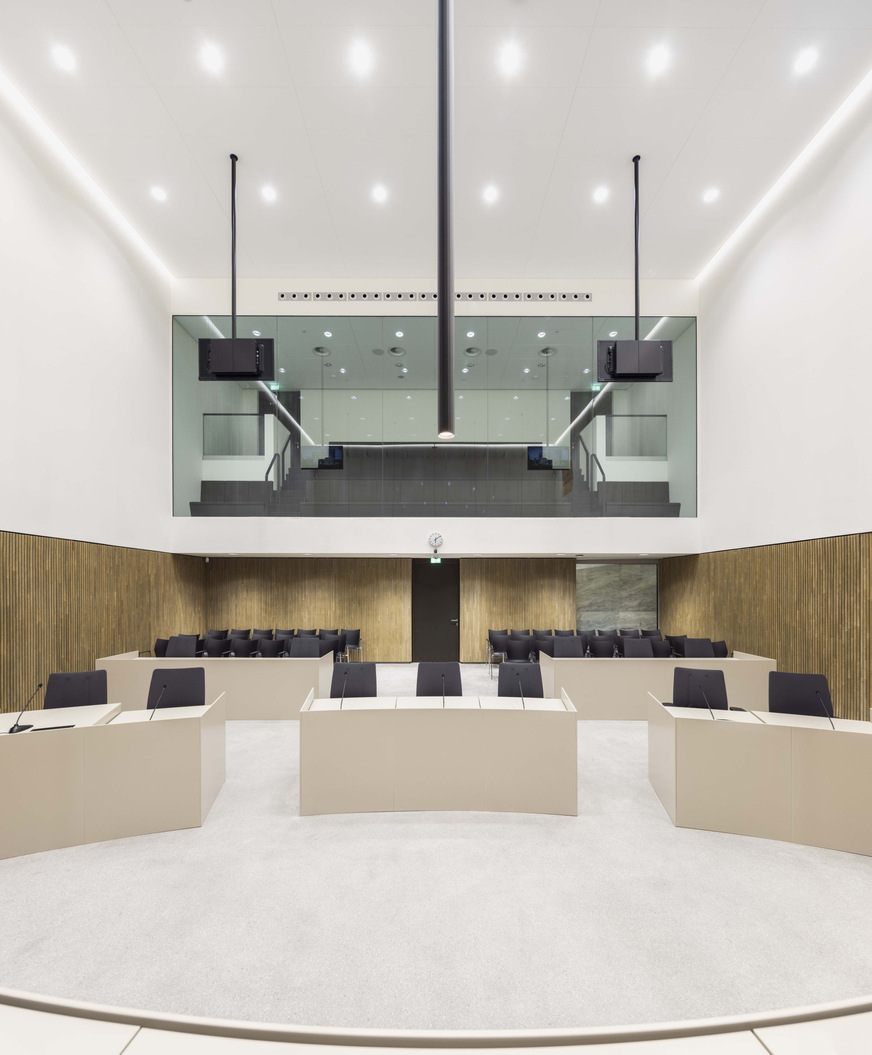
Fernando Guerra FG+SG







